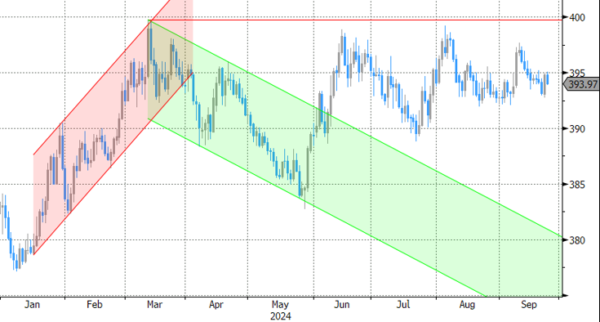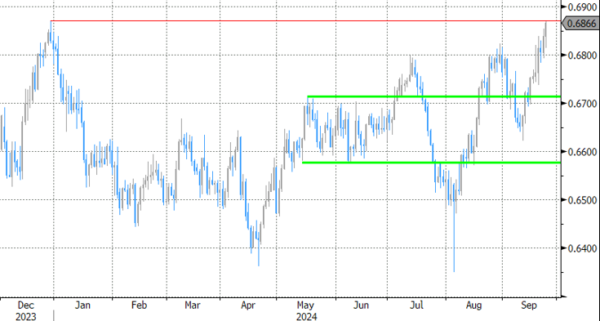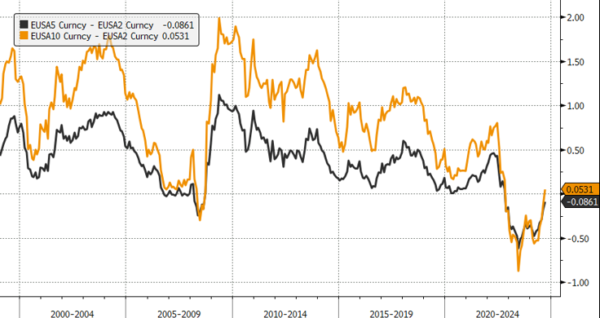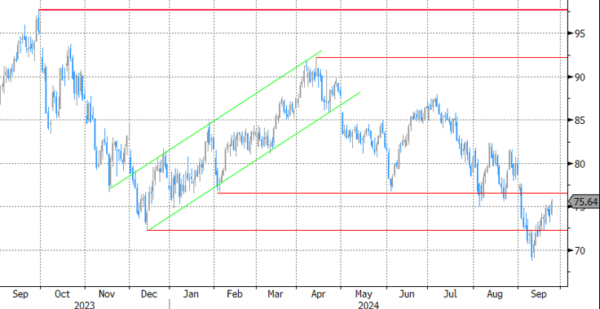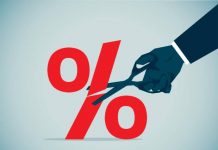Markets
A barrage of Chinese monetary stimulus measures lifted the likes of the CSI 300 with more than 4% and jumpstarted European dealings too. The EuroStoxx50 rose as much as 1.4%, lead by consumer discretionary/luxury sector, before paring gains to around 1% currently. WS opened slightly higher. The risk-on environment leaves some traces on bond markets as well with core bonds losing marginal ground. US Treasuries underperform Bunds, with net daily changes ranging between +1.2 (2-yr) to +4.5 bps (30-yr). The US 10-yr yield (+4.2 bps) tries to recoup first minor resistance of 3.78% (December 2023 low) with the bottoming out at the long end of the curve now firmly taking shape. German rate changes vary from -1.9 bps (2-yr) to 3 bps (30-yr). The German Ifo sentiment indicator undershot analyst estimates but that shouldn’t surprise much after yesterday’s disastrous PMIs. The combined reading fell from 86.6 to 85.4, matching the post-pandemic lows of 85.3. The indicator was lower only during the GFC and pandemic year 2020. Especially the current assessment (84.4, down from 86.4, new post-pandemic low) is in distress territory. The expectations gauge fell to 86.3, from 86.8. The darkening European economic outlook reopened the debate on an October rate cut. Lagarde and many of her colleagues dismissed it shortly after the September meeting but Estonian governing council member Muller is the first since the PMIs to not “totally” rule it out. He did add it would be easier to decide in December. European money markets give it a probability just short of 60%. Sticking to central bank speech, Fed’s Bowman explained her dissenting 25 bps rate cut vote last week. She said she still sees greater risks to price stability, “especially when the labour market continues to be near estimates of full employment.” A 25 bps move “would have better reinforced the strength in economic conditions, while also confidently recognizing progress toward our goals,” Bowman said, adding that she preferred a “measured” approach going forward. It’s classic risk-on in other markets as well, including commodities. Oil prices rise 2.2% (Brent $75.5/b), buoyed by elevated tensions in the Middle East as well after another major Israeli strike on Hezbollah targets in Lebanon. Iron adds about 2%. The FX space is a similar story with safe havens including the Japanese yen suffering. USD/JPY – though off intraday highs – fills bids around 144.1. Cyclical sensitive currencies such as the Aussie (also helped by the RBA’s status quo this morning) and kiwi dollar are among the best performers, together with the NOK and SEK. The euro has a slight edge over the dollar, allowing EUR/USD to recoup a good chunk of yesterday’s damage. The pair is changing hands around 1.114. Sterling holds on to yesterday’s impressive gains against the euro. EUR/GBP hovers around Monday’s closing levels of 0.832. Cable (GBP/USD) is readying an attack of the 1.34 big figure.
News & Views
Belgium business confidence continued to deteriorate in September, sliding from -12.6 to -13.3 (vs -12.4 expected). The fourth consecutive decline bring business confidence to the lowest level since January. Details showed weakness in manufacturing (-17.7 from -16.5) and building (-11.7 from -7.5) more than offsetting improvements in trade (-6.9 from -16.6) and business services (1.9 from 0.4). Manufacturing businesses assessed stock levels less favorably and also expressed much more demand expectations. Building business leaders indicated that they expect a slight decline in demand but were mainly more negative in their assessment of recent developments in both equipment use and orders books. Last week, Belgian consumer confidence fell from -3 to -7, matching the 2024 low set in May.
Czech economic sentiment improved from 93.7 to 97 in September, while consensus only expected a stabilization. It is the best outcome since June and carried by a broad-based improvement in business confidence (96.8 from 93). Confidence increased by 5.1 points in selected services, 3 in construction, 2.9 in industry and 1.3 in trade. Consumer confidence more or less stabilized (97.9 from 97.3) with subcomponents measuring overall economic & personal financial expectations over the next 12 months showing no meaningful direction neither. The share of consumers who believe that the current period is not conducive to making large purchases fell for the second consecutive month. The Czech koruna didn’t respond to the release with EUR/CZK testing this month’s high at 25.17 going into tomorrow’s central bank meeting where the CNB is expected to deliver a 25 bps rate cut to 4.25%.
Graphs
EUR/HUF: forint ekes out slight gain after MNB cut as expected (-25 bps to 6.5%) but sticks a cautious and data-driven approach
AUD/USD: Aussie dollar tests January top after RBA keeps rates steady as inflation is not expected to return to 2% before 2026
Spread between 10-yr and 2-yr EMU swap recently turned positive for first time since 2022 as ECB easing bets rise on darkening outlook
Oil (Brent, $/b) rises on hopes of a Chinese revival after the recent string of monetary measures




